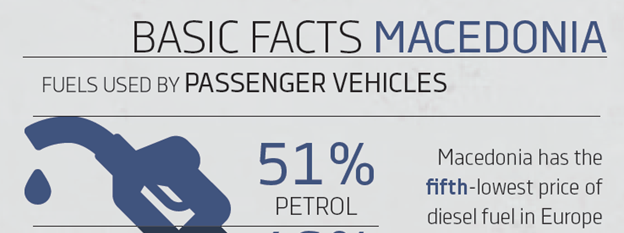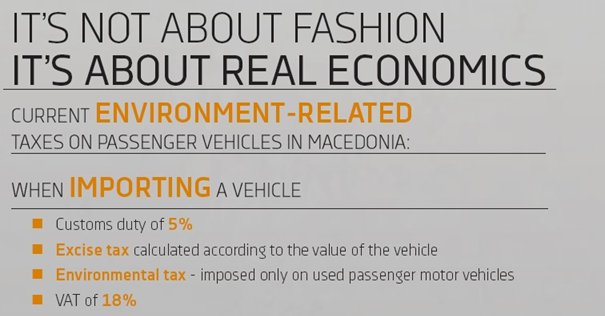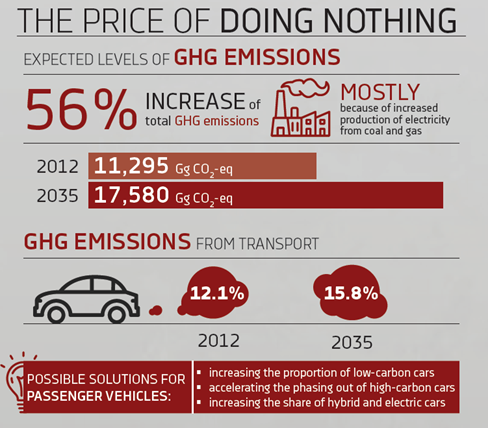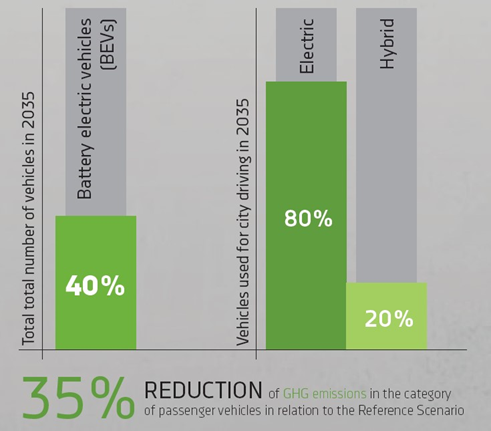Designing the future of the Macedonian transport sector – How can we be Green and Smart?
STUDY ON THE TRANSPORT SECTOR “STUTRA”- ANALYSIS OF MITIGATION POLICIES AND MEASURES
Transport is the fastest growing category in the energy sector in the Macedonian greenhouse gas inventory, increased by 16.4% between 2012 and 2014. Road transport is the biggest source of GHG emissions (almost 99%) in the transport sector. Electric vehicles are one of the best options for the decarbonization of transport. They can also contribute to the greater integration of renewable energy sources, a radical reduction of local pollution, as well as improving traffic safety by improving driving habits. But how can electric vehicles be justified in a country where coal is mostly used for energy production?

From analytics to systemic change – using Data innovation 4 sustainable action
The transition from a society with old car fleer and where diesel vehicles are still preferred to a low-carbon society where more efficient technologies are predominantly used, requires careful planning and policy making based on data rather than on assumptions.
As a response to this raising concern, case study “STUTRA” was commissioned on national level, examining the ways in which different practices affect the greenhouse gas emissions (CO2, CH4, N2O), enable renewal of the car fleet in the country and faster penetration of electric and hybrid vehicles..
What has been done differently?
We didn’t copy-paste somebody else’s model, we created our own – country specific one. Using national data along with available technologies, proposing changes in existing taxes rather than adding new ones and creating CO2 relevant socially responsible proposal for vehicle registration - turned out to be the Cinderella of transport electrification.

Turning transportation biggest problems into biggest opportunities
Smart blending of money and incentives gave stunning results: 35% reduction of Greenhouse gas emissions from the passenger vehicles rather than 56% increase as “the price of doing nothing” and possibility for 40% of the vehicles on the Macedonian roads to be electric vehicles.
Let’s not imagine, let’s make it happen!


Find all the answers to your questions in the full study STUTRA or in this Infographic.
-
Корисни линкови
26-01-2021 -
Справување со климатските промени и загадувањето на воздухот во градот Скопје
29-04-2018 -
Финансирање во климата
28-01-2022 -
Микронаративи
08-06-2022
{{"article.lastestPosts"|translate}}
-
Клучен исчекор кон поголема климатска транспарентност: одржана национална работилница со широк мултисекторски ангажман
10-12-2025 -
Обраќање на Генералниот Секретар на Обединетите Нации, Н.Е. Антонио Гутереш за нужноста од климатска акција, 10 години после Парискиот договор
10-11-2025 -
Стопанската комора на Северна Македонија го изработи првиот водич за декарбонизација за малите бизниси во земјата
28-10-2025 -
Нови финансирања за унапредување на природата и биолошката разновидност на Зелената агенда за Западен Балкан
11-03-2025



 Мод за знаковен јазик
Мод за знаковен јазик Говорен асистент
Говорен асистент Означи линкови
Означи линкови

 Зголеми маус
Зголеми маус